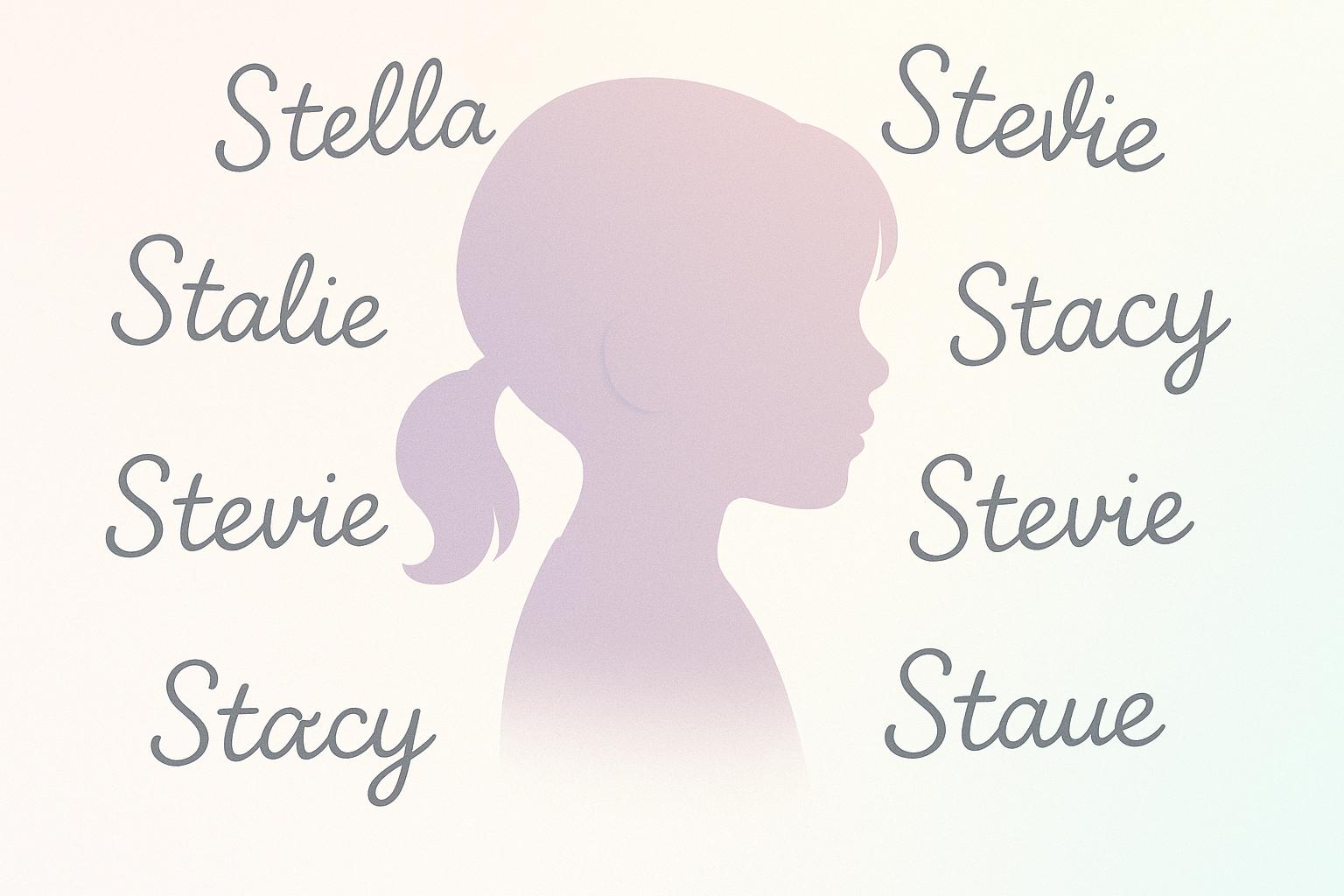Oral traditions have long played a key role in preserving ancestral names and the stories tied to them. These names are more than identifiers - they carry family history, values, and identity across generations. By sharing stories, families keep these names alive, connecting the past to the present.
Key takeaways:
- Oral traditions pass down names through stories, songs, and ceremonies.
- Emotional connections make names memorable and meaningful.
- Global practices like Indigenous place names or Gaelic naming patterns highlight diverse ways of preserving heritage.
- Modern tools like digital archives and AI-driven platforms (e.g., NameHatch) help families explore and maintain their naming history.
Combining storytelling, historical records, and technology ensures that ancestral names remain a living part of family identity.
How Oral Traditions Preserve Ancestral Names
What Are Oral Traditions?
Oral traditions are the lifeblood of community memories, passed down through generations without relying on written records. They go beyond simple storytelling to include songs, chants, ceremonial recitations, and even casual conversations - all of which carry the weight of history and identity.
Unlike written documents that can be misplaced, damaged, or forgotten in dusty archives, oral traditions thrive through active participation. Every time a grandmother recounts her great-grandfather's journey to America or an elder recites a lineage during a family gathering, these spoken words breathe life into names that might otherwise slip into obscurity.
What makes oral traditions so powerful is their interactive and dynamic nature. When someone shares an ancestral name aloud, they often provide details that written records simply can't capture - like the correct pronunciation or the emotions tied to the name. This adds layers of meaning, transforming a name into a vivid connection to the past.
Communities have developed creative ways to preserve these oral histories. Some use rhythmic patterns or music to make the stories easier to remember, while others weave ancestral names into seasonal ceremonies or religious practices. These methods ensure that names aren't just remembered - they remain alive and relevant, resonating with each new generation.
How Spoken Stories Keep Names Safe
Spoken stories act as living archives, safeguarding ancestral names through repetition and shared memory. When families come together to share stories, the act of retelling reinforces details, ensuring that no single person is the sole keeper of the knowledge.
This process is also self-correcting. If someone misremembers a name or a detail, others in the group often step in to clarify, helping to maintain accuracy over time. This collaborative storytelling ensures that ancestral names are continually verified and preserved.
Another key factor is emotional connection. When a name is tied to a compelling story - perhaps about triumphing over adversity, achieving something remarkable, or making a meaningful sacrifice - it becomes more than just a name. It becomes a symbol of that story. These emotionally charged stories are naturally retold, creating a cycle that keeps the names alive.
Oral traditions are also remarkably adaptable. As families move, languages shift, or contexts change, the stories evolve while keeping the core elements intact. This flexibility allows ancestral names to stay relevant, even as the world around them transforms.
Why Names Matter in Family Stories
In oral traditions, names take on a deeper significance, acting as markers of identity and connection. Each name carries with it a piece of family history - relationships, cultural background, and the values held by earlier generations. When these names appear in spoken stories, they anchor listeners to their place within the broader family narrative.
Often, names in oral traditions reveal hidden layers of meaning that formal records overlook. A story might explain how an ancestor earned a nickname, why certain names were passed down through specific family lines, or how naming patterns reflected social status or geographic roots. These details turn names into rich windows into family dynamics and history.
Ancestral names also serve as sources of inspiration. Families often share stories about ancestors whose names symbolize qualities they admire - like strength, wisdom, or creativity. These stories not only honor the past but also guide the present, influencing how modern families choose names for their children. They create a bridge between the aspirations of past generations and the hopes of the future.
For parents today, understanding the role of ancestral names in family stories can offer valuable insights. Tools like NameHatch can help couples explore names that connect with their family’s oral traditions, blending the wisdom of the past with modern approaches to decision-making. In this way, technology continues the timeless work of oral traditions, preserving and celebrating family heritage in a new era.
Naming Ceremonies (Ojibwe Culture)
How Different Cultures Preserve Names Through Stories
Across the globe, people have found creative ways to weave ancestral names into their shared histories. These practices highlight a universal desire to protect identity and honor legacy through storytelling.
Gaelic Father-Names and Family Trees
In Irish tradition, names often follow a structured pattern, with children named after grandparents, parents, and other relatives in a specific order. This systematic approach was widely embraced, cutting across economic and religious lines, and created predictable naming cycles. Today, these patterns are a goldmine for genealogists trying to piece together family trees, especially when official records are missing or incomplete.
Métis Family Networks
In North America, Métis communities have long relied on oral traditions to preserve family histories and names. Unlike the linear focus of European family trees, the Métis emphasize a web of interconnected kinship relationships. Elder women often act as the keepers of these stories, maintaining mental maps that link names and relationships across generations. Métis names, reflecting French-Canadian and Celtic-Orcadian influences, remain alive through storytelling by figures like MN-S Senator Gilbert Pelletier and medicine person Rose Richardson, who ensure these histories are passed down.
Indigenous Place Names and Language Programs
For many Indigenous communities, ancestral names are tied to the land. Mountains, rivers, and valleys often carry the names of ancestors, anchoring these memories to physical spaces. Efforts like language programs and digital archives ensure these names stay part of everyday life, blending history with living culture. This approach keeps ancestral names relevant and vibrant, connecting people to their heritage in meaningful ways.
sbb-itb-f13f980
How Families Can Preserve Their Ancestral Names
Preserving ancestral names is a meaningful way to connect generations, ensuring that family history and identity remain alive and accessible for years to come.
Recording Family Stories
Older relatives often hold the key to understanding the origins and significance of family names. Their stories can reveal the traditions and decisions that shaped your family tree.
Start by interviewing elder family members and recording these conversations digitally. Ask thoughtful questions: How were children named in past generations? Were certain names passed down intentionally? Did specific names hold special meanings or honor family members? These discussions often uncover unique naming patterns, such as the tradition of naming the oldest daughter after her maternal grandmother or sons after uncles who served in the military. These customs often reflect deeper family values and connections.
Don’t forget to ask about pronunciation and spelling changes. Names often evolve as families migrate between countries or regions, and older relatives may recall the original forms that have since been altered or forgotten.
Once these stories are captured, visual tools can help bring the family’s journey to life.
Creating Family Name Maps
Mapping ancestral names can provide a fascinating glimpse into your family's geographical roots and migration history. Online surname mapping tools allow you to trace where specific names appeared over time, offering a visual timeline of your family's movements.
These tools can highlight the regions where your surname originated or became prominent. To deepen your understanding, pair this geographical data with resources that explain the meanings and origins of surnames. This combination helps uncover not just where your ancestors lived, but why certain names were chosen and how they evolved across generations.
By blending visual data with personal narratives, you can create a more detailed and engaging family history.
Combining Stories with Written Records
A well-rounded family history emerges when oral traditions are paired with documented evidence. Official records like birth certificates, marriage licenses, and personal letters can complement the stories passed down through generations.
For instance, a birth certificate might list your great-grandfather as "John", but family stories could reveal that he was affectionately called "Jack" and named in memory of a sibling who passed away young. These details add depth and context to the official records.
Consider creating audio or video recordings that merge both elements. Show official documents while recounting the personal stories behind them. This approach preserves not only the facts but also the emotions and connections that make ancestral names an integral part of your family's identity. By doing so, you ensure these stories remain vivid and accessible for future generations.
Modern Tools That Support Oral Memory and Technology
Today’s technology plays a key role in preserving ancestral names while respecting the richness of oral traditions. Digital tools not only complement family storytelling but also help create lasting records that blend modern techniques with heritage, ensuring family histories thrive in the digital age.
Digital Archives and Community Projects
Digital platforms have become invaluable for families looking to archive their stories and keep ancestral names alive. Many community-driven initiatives provide tools for adding context and metadata to audio or video recordings, making it easier to highlight moments when traditions and names are shared. Some projects are specifically designed to handle sensitive cultural content with care, ensuring respect for heritage. Additionally, local historical societies often host workshops to help families convert outdated media formats into digital records, making these stories more accessible for future generations.
AI-Powered Name Discovery Tools
Modern couples can also use technology to connect tradition with innovation. Platforms like NameHatch, powered by AI, are designed to help partners explore names that honor their family heritage. With features like smart filters, users can discover names that resonate with their cultural background. The platform's partner matching system notifies both individuals when they show interest in the same name, encouraging collaboration. Its swipe-based interface makes browsing, saving favorites, and revisiting meaningful names simple, sparking thoughtful conversations about ancestry and tradition.
Language Learning Resources
Understanding the linguistic roots of ancestral names adds an extra layer of meaning. Language learning platforms offer opportunities to reconnect with heritage and Indigenous languages, often including courses focused on traditional vocabulary and naming customs. These resources frequently feature modules on family-related terms and interactive sessions with native speakers, helping users explore the cultural stories tied to their names. By combining language learning with oral history preservation, families can strengthen their ties to the traditions and narratives that shape their identities.
Honoring the Past, Preserving the Future
Exploring oral traditions reveals how ancestral names carry the essence of family history. These names are more than just identifiers - they hold stories, values, and connections passed down through generations. By blending traditional storytelling with modern technology, families can build a lasting foundation for preserving their heritage. This merging of old and new creates a bridge between timeless narratives and cutting-edge digital preservation.
AI is reshaping how we preserve and understand family history. With its ability to digitize and organize historical documents, AI makes searching for names and family records simpler and more accessible. Tools equipped with advanced transcription capabilities can decode old handwritten records, uncovering ancestral names that might otherwise remain hidden. AI also analyzes surname origins and variations, offering insights into family connections that oral traditions may have hinted at but couldn’t fully explain.
Generative AI adds a new dimension to genealogical research, turning raw data into rich, engaging stories. These tools can weave ancestral names into meaningful narratives, painting a vivid picture of the lives behind those names. By placing ancestors within the context of historical events and societal changes, families gain a deeper understanding of what their names represented in their original time and place.
Modern platforms make it easier than ever for families to collaborate on preserving their history. Relatives spread across the country can contribute to shared digital heritage projects. Digital story maps can trace migration routes, linking ancestral names to the geographical paths their families once traveled.
Taking this a step further, NameHatch combines tradition with innovation for families starting a new chapter. Its AI-powered tools help couples find names that reflect their cultural roots while fostering collaboration in the decision-making process. This transforms the act of choosing a name into a meaningful journey through family heritage.
Preserving family history is a shared responsibility. Every generation plays a role in keeping the connection to the past alive. Whether it’s recording elders recounting family stories, creating detailed family name maps, or using AI to uncover lost connections, every effort strengthens the bond between past and future.
The tools are here, the technology is within reach, and the stories are waiting to be told. By recording, digitizing, and sharing these stories, families ensure that ancestral names remain a vibrant part of their legacy for generations to come.
FAQs
How are ancestral names preserved and passed down through oral traditions?
Ancestral names are kept alive and handed down through storytelling, shared memories, and traditional rituals. These practices foster a collective effort within communities to ensure names are remembered and passed along with care.
Although oral traditions can shift over time, research suggests they tend to remain dependable when supported by consistent customs like ceremonies, songs, and narratives. These approaches help preserve ancestral names and their meanings, keeping them an integral part of cultural heritage for future generations.
How do modern tools like AI and digital archives help preserve family naming traditions?
Modern tools like AI-driven platforms and digital archives are transforming the way family naming traditions are preserved. By digitizing and categorizing oral histories, these tools make it simpler to document, store, and pass down ancestral names and their meanings through generations.
These technologies act as a bridge between the art of traditional storytelling and the precision of modern record-keeping. They ensure that the richness of family and cultural heritage remains intact, even as oral traditions evolve in today’s digital era. This approach not only respects the past but also keeps it within reach for future generations.
What’s the best way to combine oral traditions and written records to build a detailed family history?
To build a detailed and meaningful family history, start by gathering oral traditions. Conduct interviews, record audio, or write down narratives shared by family members. These personal stories often include details and memories that official documents might overlook. They add depth and personality to the broader historical picture.
Complement these oral accounts with written records such as birth certificates, census data, or family letters. These documents help provide historical context and confirm the accuracy of the stories. Tools like digital recorders or even your smartphone make it easier than ever to capture these invaluable memories.
By blending personal stories with written records, families can preserve a richer and more complete heritage. This ensures that these cherished stories and histories are passed down to future generations.



